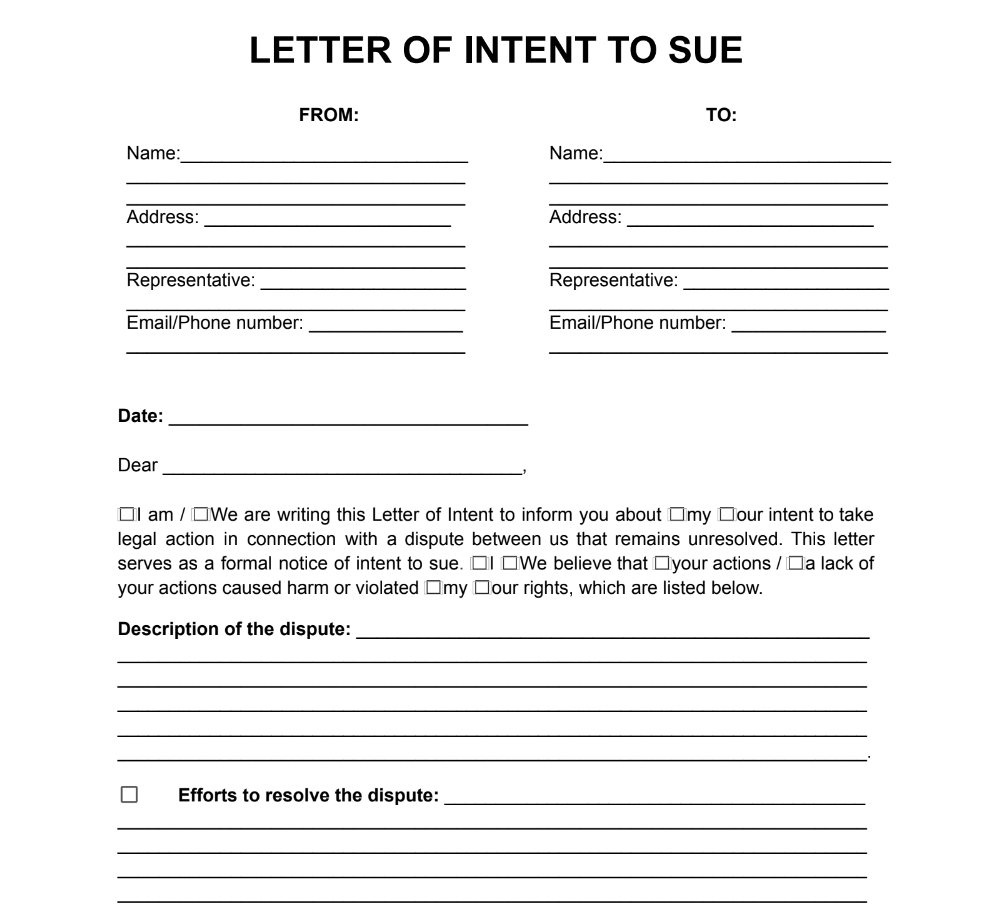 Preview
Preview

An intention to sue letter is a formal document that signals your intention to pursue legal action against another party. Whether you’re dealing with a breach of contract, negligence, or any other legal grievance, knowing when and how to use a notice of intent to sue can be a valuable tool in protecting your rights and interests.
A letter of intent to sue template comes into play when informal negotiations have failed, and you believe you’ve been wronged or suffered damages due to another party’s actions or negligence. The demand letter of intent to sue is often the last step before litigation, designed to encourage the other party to settle the matter without going to court.
When to consider using this letter:
A sample letter of intent to sue generally involves two main parties: the claimant and the defendant. These roles can be filled by individuals, businesses, or organizations, depending on the nature of the dispute.
The terms of an intent to sue letter example outline the specifics of the dispute and the expectations from both parties. Here’s what the standard intent to sue PDF or Word format document typically includes:
These terms form the foundation of a legal letter of intent to sue, guiding the interaction between the parties and setting the stage for potential resolution before litigation.
If you need to draft a letter of intent to take legal action, you can start with a suitable template available from Jurizmo. Follow these steps to ensure your notice of intent to sue template is correctly completed:
A letter of intent to sue can be a powerful tool in your legal arsenal, often serving as a catalyst for dispute resolution. By clearly articulating your claims and desired outcomes, this letter can pave the way for a settlement without the need for prolonged litigation. However, remember that each case is unique, and while the letter of intent to sue examples and templates can provide guidance, tailoring your document to fit the specific nuances of your situation is crucial.
 Preview
Preview
